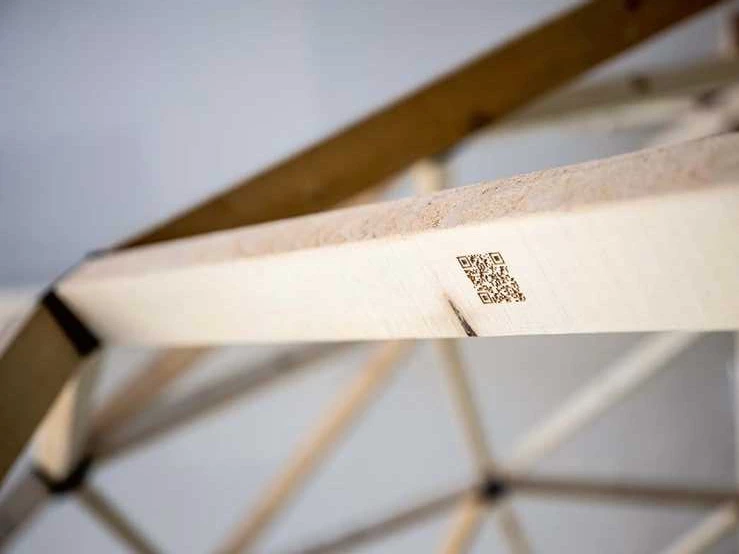It's a sad fact that even though our forests are disappearing at an alarming rate, new wooden structures are typically made of all-new wood. A special computer system could help change that, by facilitating the use of wood reclaimed from existing buildings.
Currently in development at the ETH Zurich research institute, the system is initially used to create an inventory of all the pieces of wood that the users were able to harvest from a building or other structure slated for demolition. That wood could also consist of pieces left over from construction projects.
Once the dimensions of all the pieces have been recorded, the user specifies the sort and size of structure that they wish to build. The system responds by generating a design for the structure, the geometry and dimensions of which are based on the reclaimed wood that's available. Each piece of wood has a unique QR code laser-burned onto it, so it can be easily selected and assigned to a specific part of the structure
In a proof-of-concept demonstration of the technology, an ETH team led by Asst. Prof. Catherine De Wolf started by disassembling an entire floor of an old parking garage in Geneva which was soon to be demolished. The pieces of wood were then individually measured, nails and other foreign objects were removed from them, their data was entered into the system, and their QR codes were applied.

Following a design created by the system based on the wood available, the team proceeded to build a wooden-strut geodesic dome. It is made entirely of reclaimed materials, and can be seen in the video below.
Down the road, De Wolf envisions a system in which an online digital platform provides information on the materials used in existing buildings. Architects could consult that platform, basing their designs on materials which were soon to become available as buildings were torn down.
Readers might also be interested in an experimental MIT system, which selects salvaged sections of trees for use in building projects.
Source: ETH Zurich






